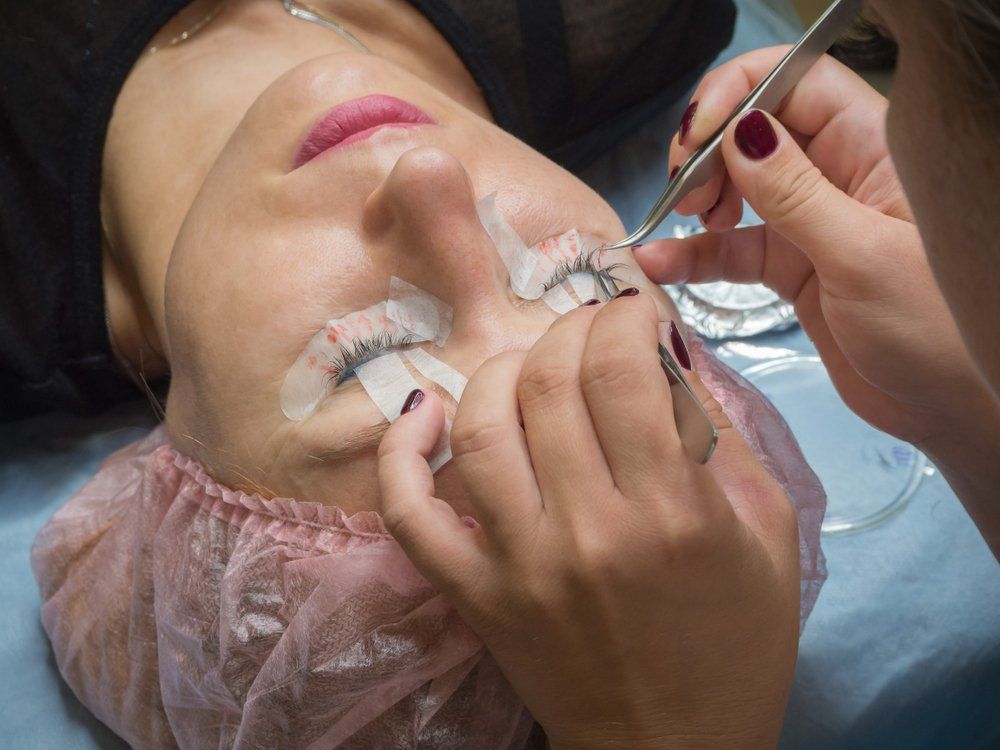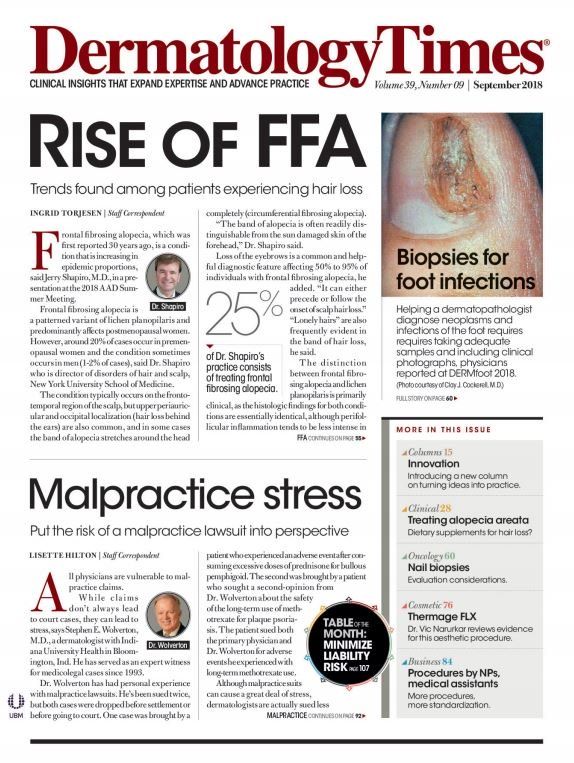- Acne
- Actinic Keratosis
- Aesthetics
- Alopecia
- Atopic Dermatitis
- Buy-and-Bill
- COVID-19
- Case-Based Roundtable
- Chronic Hand Eczema
- Chronic Spontaneous Urticaria
- Drug Watch
- Eczema
- General Dermatology
- Hidradenitis Suppurativa
- Melasma
- NP and PA
- Pediatric Dermatology
- Pigmentary Disorders
- Practice Management
- Precision Medicine and Biologics
- Prurigo Nodularis
- Psoriasis
- Psoriatic Arthritis
- Rare Disease
- Rosacea
- Skin Cancer
- Vitiligo
- Wound Care
Publication
Article
Dermatology Times
The ideal woman?
Author(s):
False eyelashes and hair extensions could become a problem if it becomes representative of the “ideal” woman.
False eyelashes and hair extensions could become a problem if it becomes representative of the “ideal” woman. This photo demonstrates an eyelash extension procedure. (©Stanislav71/Shutterstock.com)

Dr. Draelos

One of the most interesting changes I have observed is the resurgence of the fake hair fashion is an interesting phenomenon.
False eyelashes were a must-have fashion statement in the 1960s and disappeared for almost 50 years, only to become a staple of newscasters in 2018. I did a survey of false eyelash use among female cable and network television reporters, and I discovered that 100% of the ladies were wearing some configuration of false eyelashes.
Why the rediscovery of this Max Factor invention? I think it is due to high definition TV. With traditional resolution, you can see the eyes of the female reporter, but not her eyelashes. High Definition TV allows visualization of such detail that every lash can be seen. As a matter of fact, I could determine the lash configuration each lady was wearing. The most popular lashes were upper eyelid demi-lashes - this is a style in which the artificial lashes close to the inner canthus are shorter and become progressively longer toward the lateral canthus. In my opinion, the ladies wearing the eyelash prostheses had more dramatic and alluring eyes.
It is amazing to consider that eyelash hair patterns may be dictated by advancements in digital TV cameras and the increased resolution of LED monitors. So, the false eyelash industry is booming because someone noticed that light could be emitted in various wavelengths by a diode. Then, someone noticed that these LEDs could be organized in banks to create a complex image with more diodes creating a more detailed picture. Then, someone came up with the idea that pictures could be digitized by creating pixels of information that could be disassembled and subsequently reassembled to transmit images electronically over long distances. And, this is why we now have renewed false eyelash popularity.
Have you also noticed that many of the same female reporters also sport very long thick scalp hair? Observe that the hair is very thick at the ends and holds a very nice bouncy curl. Is it real? Of course, not! However, long hair has been a sign of femininity and overall systemic health. So, similar to the renewed popularity of false eyelashes, you can see every hair on the head of female newscasters, and these long lush locks become important.
Is the use of fake hair a problem? Not really, when you know it is fake. It could become a problem if this image becomes representative of the “ideal” woman.
I now have women coming into my office wanting to grow impossibly long eyelashes and impossibly long thick hair. They believe they have a hair disorder because their eyelashes will not grow as long as their favorite TV talk show personality, even with the use of prescription eyelash growth products. I try to explain that beautiful high definition TV eyelashes and scalp hair are most certainly augmented, but this is not the answer the patient desires. I add that they, too, could use false eyelashes and hair extensions, but they should prepare to lose some of their own hair due to adhesive problems and hair breakage. Remember, even high definition TV is not all it seems.

Newsletter
Like what you’re reading? Subscribe to Dermatology Times for weekly updates on therapies, innovations, and real-world practice tips.






















